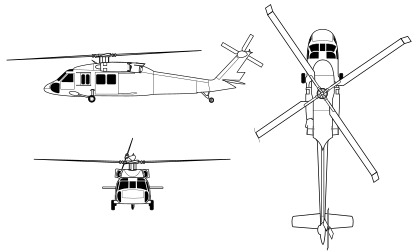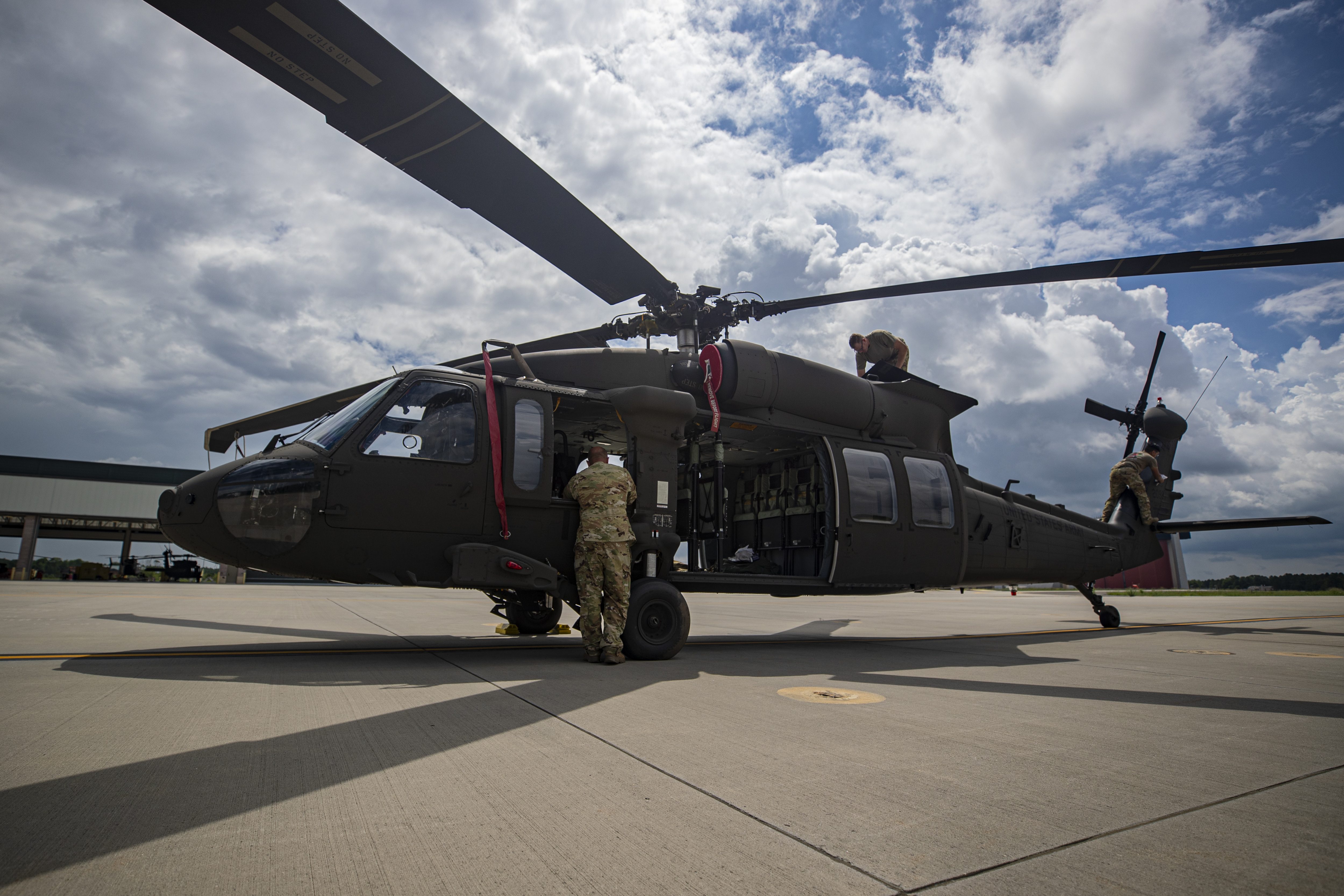UH 60 Black Hawk Helicopter Variations and Their Uses
UH 60 Black Hawk Helicopter Variations and Their Uses
Blog Article
Checking Out the Ingenious Innovation Behind Airplane Design and Engineering
The area of aircraft layout and engineering is witnessing a transformative change driven by cutting-edge modern technologies that improve performance, sustainability, and efficiency. As the market grapples with the challenges of environmental obligation, developments in lasting aviation innovations guarantee to reshape the future.
Advanced Products in Aircraft Style
How can the combination of sophisticated products transform aircraft layout? The consolidation of advanced products, such as carbon fiber compounds, titanium alloys, and advanced porcelains, plays a critical role in enhancing aircraft efficiency and efficiency. These materials supply superior strength-to-weight ratios, enabling makers to decrease general airplane weight without endangering architectural honesty. This decrease in weight straight adds to enhanced fuel performance and enhanced haul capability.
In addition, advanced products display boosted resistance to deterioration and tiredness, leading to reduced maintenance expenses and prolonged solution life. For example, using titanium in vital elements helps withstand severe temperature levels and stresses, while carbon fiber composites supply adaptability in design and manufacturing procedures. This adaptability enables even more aerodynamic forms, adding to superior performance qualities.
Additionally, the integration of wise materials, which can transform residential properties in reaction to outside stimulations, opens up brand-new opportunities for adaptive systems in airplane style. uh 60. These innovations guarantee not only to improve safety and functional performance however also to contribute to sustainability initiatives by decreasing environmental effect through minimized emissions. In summary, advanced products are redefining the landscape of airplane style, leading the way for a lot more effective, long lasting, and eco-friendly air travel services
Wind Resistant Technologies for Efficiency
Wind resistant developments play an essential duty in boosting airplane effectiveness, significantly affecting fuel intake and overall efficiency. Breakthroughs in airfoil design, such as the intro of supercritical wings, permit maximized lift-to-drag ratios, minimizing drag at transonic speeds. These advancements allow airplane to maintain higher rates with reduced fuel expense, straight affecting functional costs and ecological sustainability.
In addition, the assimilation of winglets has actually shown efficient in reducing vortex-induced drag at the tips of wings, better improving gas effectiveness - uh 60. This layout modification leads to a decrease in wake turbulence, adding to improved aerodynamic performance throughout cruise problems

Furthermore, computational liquid dynamics (CFD) tools have actually changed the screening and refinement of wind resistant forms, permitting precise simulations of airflow around airplane (uh 60). This allows engineers to introduce continually, making certain that contemporary airplane not just satisfy regulatory requirements yet likewise press the limits of effectiveness in aeronautics

Role of Computer System Simulations
Computer system simulations have actually ended up being an important tool in the area of airplane design, enabling designers to perform detailed evaluations and optimizations of different layout facets. These simulations enable the online screening of aerodynamic residential or commercial properties, structural integrity, and efficiency metrics long prior to physical prototypes are built. By utilizing computational fluid characteristics (CFD) and finite aspect evaluation (FEA), designers can predict how air flows around the aircraft and exactly how different products will react to stress and anxiety and strain.
Furthermore, computer system simulations promote the exploration of a large range of scenarios and variables, accelerating the style process and decreasing prices linked with physical testing. This capability not only improves the accuracy of predictions relating to aircraft habits but also supplies insights into prospective style renovations that may not be right away obvious through standard techniques.

Furthermore, simulations help make certain conformity with rigid safety laws by enabling engineers to determine and rectify potential concerns early in the layout stage. The combination of simulation modern technologies into the aircraft layout process underscores the substantial innovations in design practices, inevitably adding to the growth of safer, a lot more efficient, and ecologically pleasant aircraft.
Artificial Knowledge in Engineering
Expert system (AI) is changing the design landscape, especially in aircraft style, by improving decision-making procedures and enhancing design workflows. With machine discovering algorithms, AI can analyze substantial datasets, discovering patterns and insights that educate style options and boost total performance.
AI applications in airplane style have a peek at this website include generative style, where algorithms produce several design choices based on specified specifications, enabling engineers to evaluate a broader series of opportunities. This not just increases the layout stage but additionally makes sure that the end products meet stringent performance and security criteria.
Furthermore, AI-driven predictive analytics assist in maintenance organizing by evaluating historic data and forecasting potential failures. This proactive method reduces downtime and enhances aircraft integrity.
Furthermore, AI aids in simulation and modeling, allowing designers to test designs under various conditions without the demand for physical models. This capacity reduces growth timelines and decreases prices connected with conventional testing approaches.
Sustainable Air Travel Technologies
Exactly how can the aviation industry properly equilibrium development and environmental duty? The answer exists in the fostering of sustainable aeronautics modern technologies that prioritize performance and minimize carbon emissions. Innovations such as that site lasting aeronautics fuels (SAFs), which are originated from renewable energies, have become an important part in achieving reduced lifecycle emissions. SAFs can considerably decrease the carbon impact of trips, making them a practical option to conventional jet fuels.
Additionally, innovations in airplane style, such as the growth of lighter products and more aerodynamically efficient forms, add to enhanced fuel performance. Electric and hybrid propulsion systems are also gaining traction, using a pathway to reduce dependence on nonrenewable fuel sources and reduce greenhouse gas exhausts.
The combination of these innovations is sustained by regulative frameworks and sector collaborations targeted at setting ambitious sustainability targets. Additionally, digital tools like data analytics and artificial knowledge can maximize trip operations, even more improving gas effectiveness. By welcoming sustainable methods and innovations, the aeronautics sector can not only meet the expanding need for flight yet also play a critical function in resolving environment change, guaranteeing an extra sustainable future for air transportation.
Final Thought
The convergence of sophisticated products, aerodynamic advancements, and innovative innovations notes a considerable development in aircraft design and engineering. The integration of carbon fiber compounds, titanium alloys, and AI-driven processes not just boosts efficiency and effectiveness however likewise improves workflows and predictive upkeep. The ongoing development of lasting air travel innovations underscores a dedication to environmental responsibility, leading the method for a greener future in aviation. This continual development will form the market's trajectory for several years to find.

Computer simulations have actually become a vital device in the field of aircraft layout, enabling engineers to carry out in-depth analyses and optimizations of numerous layout aspects.The convergence of sophisticated products, wind resistant technologies, and browse around this site cutting-edge technologies marks a considerable advancement in airplane layout and design.
Report this page